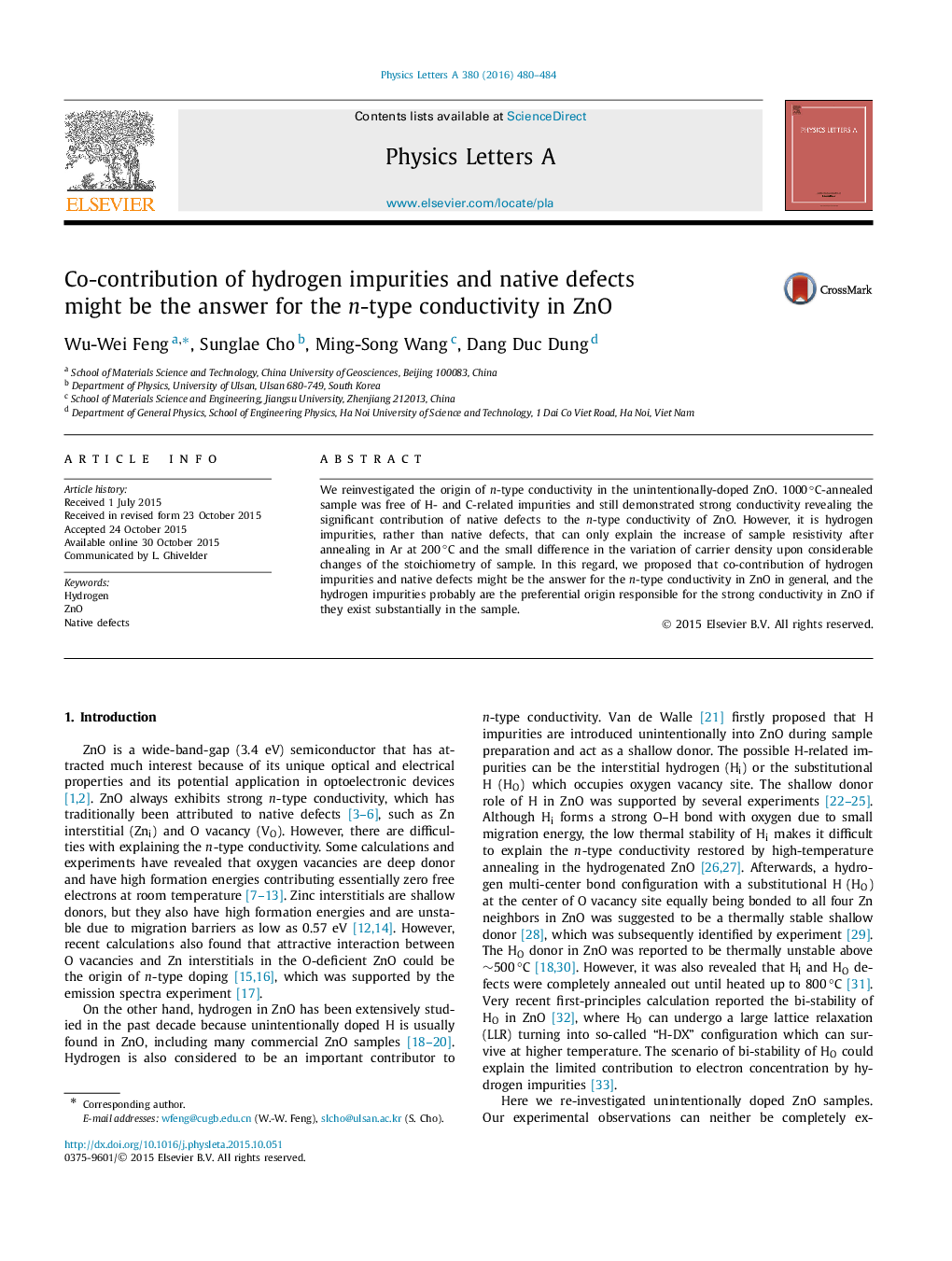| Article ID | Journal | Published Year | Pages | File Type |
|---|---|---|---|---|
| 1863410 | Physics Letters A | 2016 | 5 Pages |
•Native defects cannot explain large increase of resistance of the sample after 200 °C-annealing.•Native defects cannot explain changes of carrier concentration being in range of few orders lower than for stoichiometry.•Above two important phenomena can be explained by H-related defects.•n-type conductivity in ZnO cannot be solely ascribed to H-defects or native defects, both could be contributor.•The contribution of CHx to the majority of n-type conductivity was ruled out.
We reinvestigated the origin of n-type conductivity in the unintentionally-doped ZnO. 1000 °C-annealed sample was free of H- and C-related impurities and still demonstrated strong conductivity revealing the significant contribution of native defects to the n-type conductivity of ZnO. However, it is hydrogen impurities, rather than native defects, that can only explain the increase of sample resistivity after annealing in Ar at 200 °C and the small difference in the variation of carrier density upon considerable changes of the stoichiometry of sample. In this regard, we proposed that co-contribution of hydrogen impurities and native defects might be the answer for the n-type conductivity in ZnO in general, and the hydrogen impurities probably are the preferential origin responsible for the strong conductivity in ZnO if they exist substantially in the sample.
